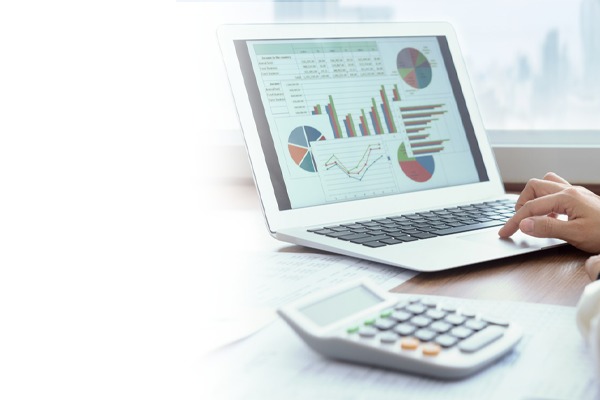Understanding Regulatory and Compliance Issues
Regulatory and compliance issues refer to the laws and standards businesses must follow to maintain legal and ethical operations. This includes accurate financial reporting, tax compliance, and adherence to industry-specific regulations, ensuring transparency and avoiding legal penalties. Guaranteeing consistency isn’t just about keeping away from legitimate repercussions but also about cultivating trust with partners, including clients, workers, and financial backers.
Tax compliance
Tax compliance refers to adhering to tax laws and regulations by accurately reporting income, expenses, and other financial details to tax authorities. It involves timely filing of tax returns, paying owed taxes, and maintaining required documentation to avoid penalties. To guarantee tax collection consistency, organizations ought to: Routinely update information on charge regulations and guidelines, as these can change much of the time. Guarantee that all monetary exchanges are precisely recorded and announced. To avoid penalties, adhere to tax filing and payment deadlines. Work with or consult a tax professional to navigate complex tax issues.
Bookkeeping and Financial Reporting
The foundation of compliance is accurate financial reporting and bookkeeping. This entails keeping thorough and precise records of every financial transaction. Important components consist of:
Accurate recording of earnings, outlays, possessions, and debts.
Compliance with International Financial Reporting Standards (IFRS) or Generally Accepted Accounting Principles (GAAP), as applicable to the jurisdiction.
Putting in place strong internal controls to guarantee accuracy and stop fraud.
Compliance with standards
To preserve operational integrity and stay out of legal hot water, compliance with industry standards and regulations is essential. This entails following OSHA (Occupational Safety and Health Administration) regulations and guaranteeing worker safety. Minimizing the impact on the environment by adhering to Environmental Protection Agency (EPA) guidelines. And respecting laws such as the General Data Protection Regulation (GDPR) to protect and preserve data privacy.
The Role of Technology in Compliance
To manage regulatory and compliance issues, technology is essential. Businesses can ensure timely reporting, maintain accurate records, and automate compliance processes with the aid of advanced software solutions. ERP systems, for instance, can integrate different compliance functions, which can streamline processes and lower the chance of errors.
Challenges in compliance management
The sheer volume and intricacy of guidelines can be overpowering for organizations, particularly those working in numerous wards. Monitoring administrative changes and guaranteeing adherence across all areas can plague you.
Time, money, and expertise are just a few of the significant resources required for compliance. Little and medium-sized enterprises (SMEs) frequently battle to designate adequate assets for consistent endeavors, in contrast with bigger associations. Guidelines can be dependent on translation, and organizations might confront trouble understanding and carrying them accurately. Ambiguities in administrative language can prompt irregularities in consistency in rehearsals.
Blockchain and artificial intelligence are two examples of rapid technological advancements that have outpaced regulatory frameworks. Organizations should explore the questionable territory of emerging advances while guaranteeing consistency with existing guidelines.
Administrative bodies are turning out to be more careful in implementing consistency, with expanded examination and punishments for rebelliousness. Businesses face increased compliance challenges as a result of this increased enforcement pressure.
Strategies for Effective Compliance Management
Establishing a compliance culture begins at the top. Leadership has to show that it is dedicated to upholding the law and acting morally. This dedication ought to permeate the entire company, cultivating a culture that values and prioritizes compliance.
An exhaustive consistency program ought to incorporate strategies, techniques, and controls custom-made to the particular administrative prerequisites of the business and locale. Normal reviews and evaluations can assist with distinguishing holes and guarantee progress consistency. Using technology can make compliance processes more efficient. Solutions based on regulatory technology (RegTech) can track regulatory changes, automate compliance procedures, and offer real-time insights.
Employee education and training programs should be ongoing. These courses ought to address ethical principles, legal requirements, and the significance of compliance. Employees with more knowledge are better able to recognize possible problems and follow compliance procedures.
Regular Risk Assessment
Regular risk assessments can assist in locating possible non-compliance areas and directing mitigation efforts in the right direction.
Identify Risks: Consistently review potential risks in financial management, operations, and compliance.
Evaluate Impact: Analyze the severity and likelihood of each identified risk to prioritize action.
Develop Mitigation Plans: Create strategies to minimize or eliminate risks, such as implementing stronger controls.
Monitor Changes: Regularly update the risk assessment to reflect any new threats or changes in business conditions.
Ensure Compliance: Align risk management with legal and regulatory requirements to avoid penalties.
Review Effectiveness: Periodically review and adjust risk management strategies to ensure ongoing protection and efficiency.
Conclusion
To sum up, managing regulatory and compliance issues is a complex process that calls for accuracy, perseverance, and diligence. Businesses can avoid legal ramifications and establish a reputation for honesty and dependability by concentrating on tax and bookkeeping compliance and upholding industry standards. Businesses may further expedite compliance procedures and guarantee that they stay compliant in a regulatory landscape that is continuously evolving by utilizing technology and implementing best practices.
FAQ’s
Why is regulatory compliance important for businesses?
Regulatory compliance is crucial because it helps businesses avoid legal penalties, fines, and sanctions. It also protects the organization’s reputation, ensures operational efficiency, builds trust with stakeholders, and promotes ethical business practices.
What are the common areas of regulatory compliance?
Common areas include data protection and privacy (e.g., GDPR, CCPA), financial regulations (e.g., the Sarbanes-Oxley Act), health and safety standards (e.g., OSHA), environmental regulations (e.g., EPA standards), and industry-specific regulations (e.g., FDA for pharmaceuticals, HIPAA for healthcare).
How can technology aid regulatory compliance?
Technology can aid in regulatory compliance by automating compliance processes, tracking regulatory changes, providing real-time reporting and analytics, facilitating training programs, and ensuring accurate and timely record-keeping.
















